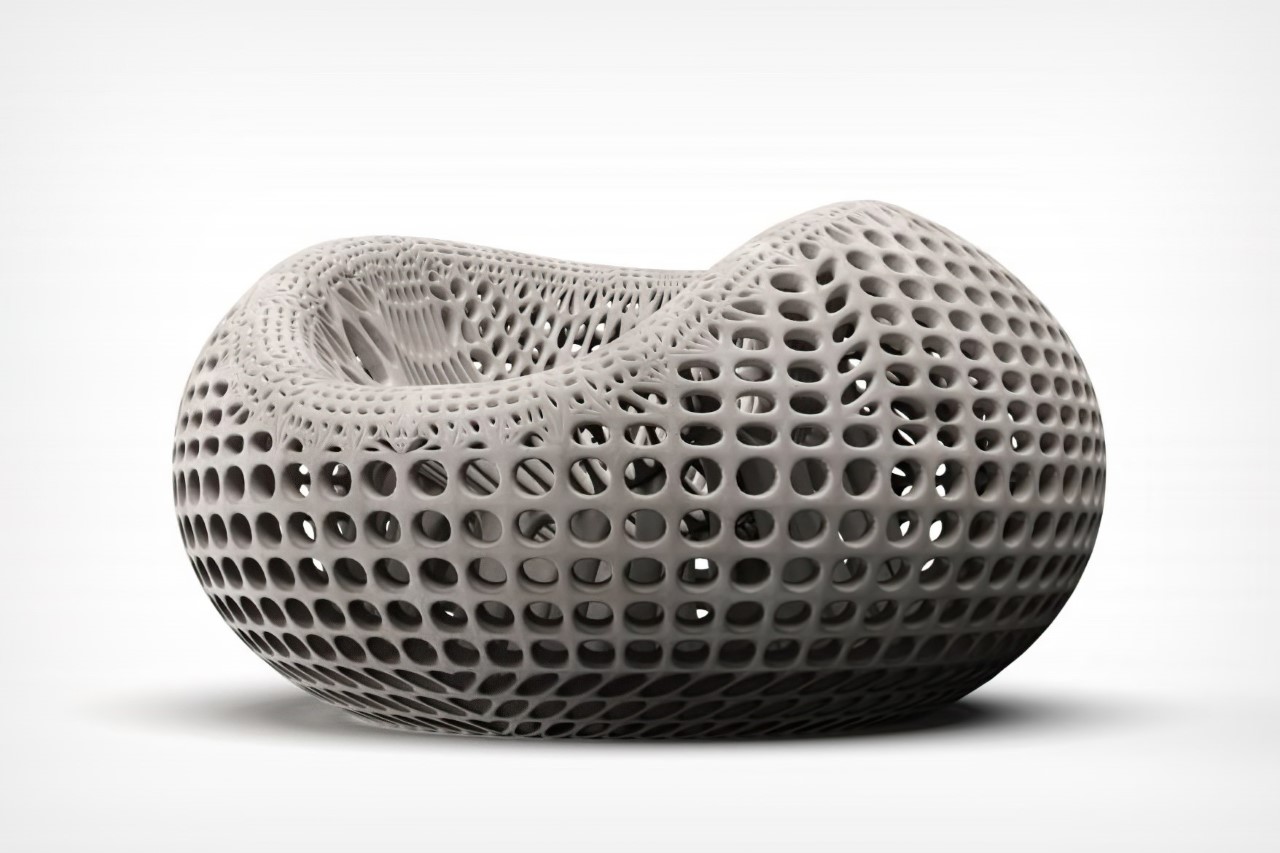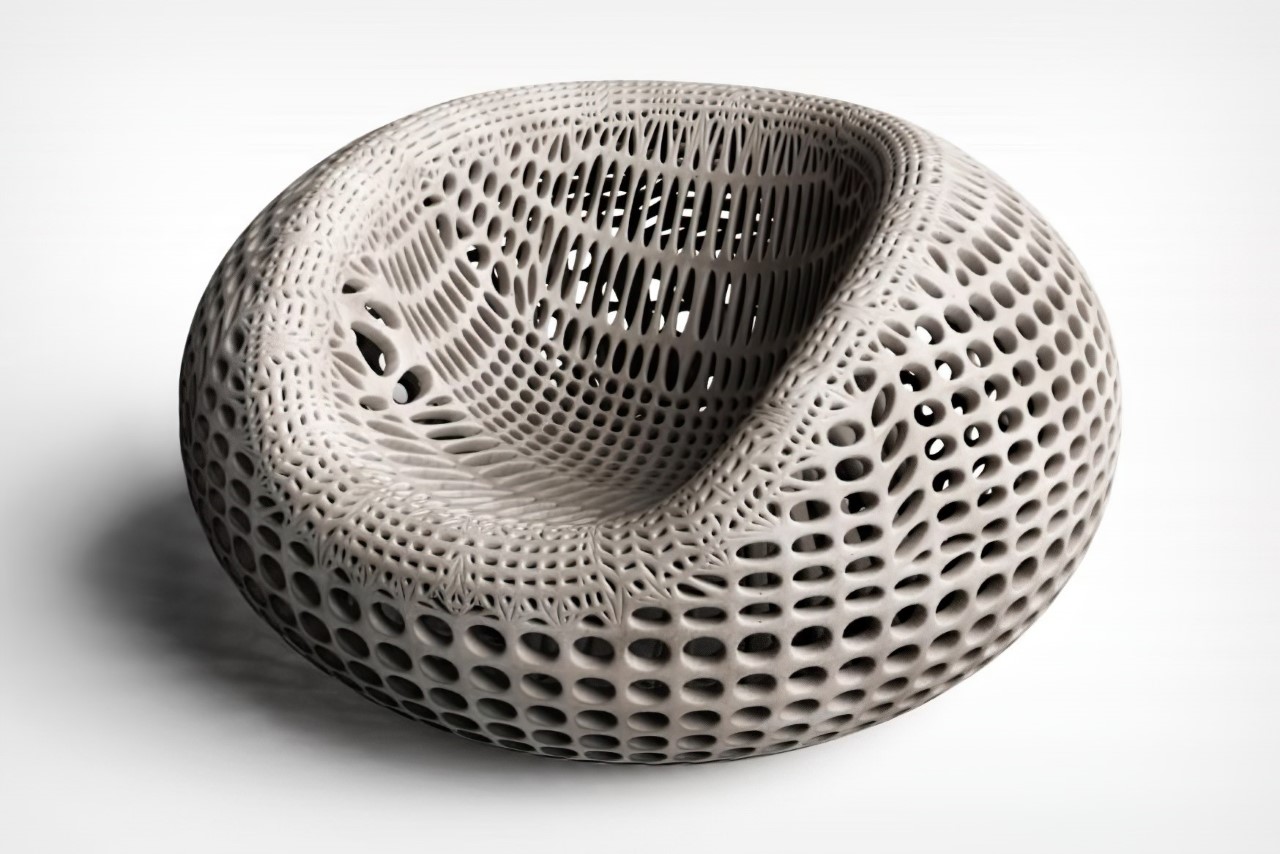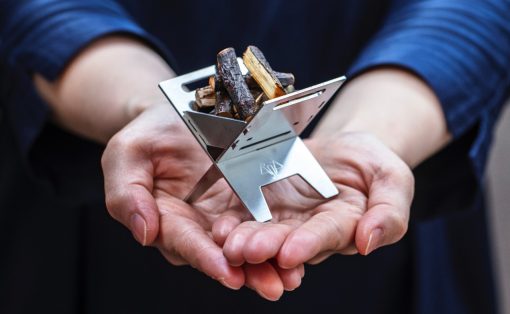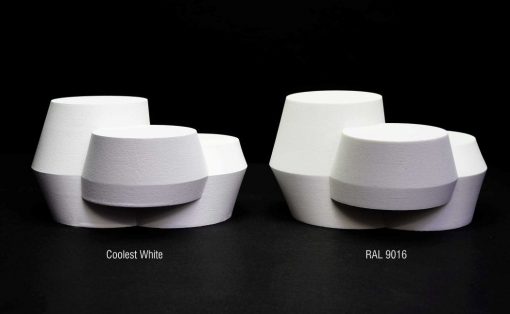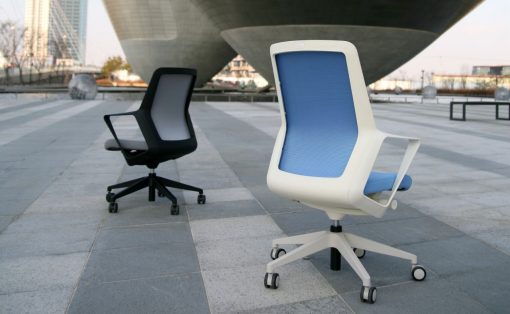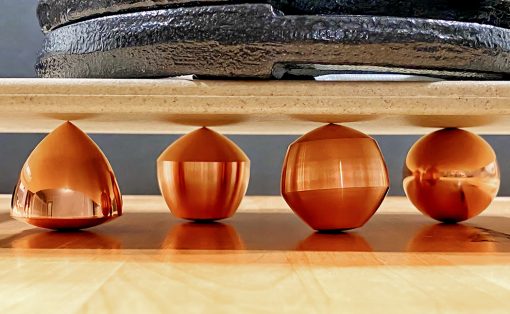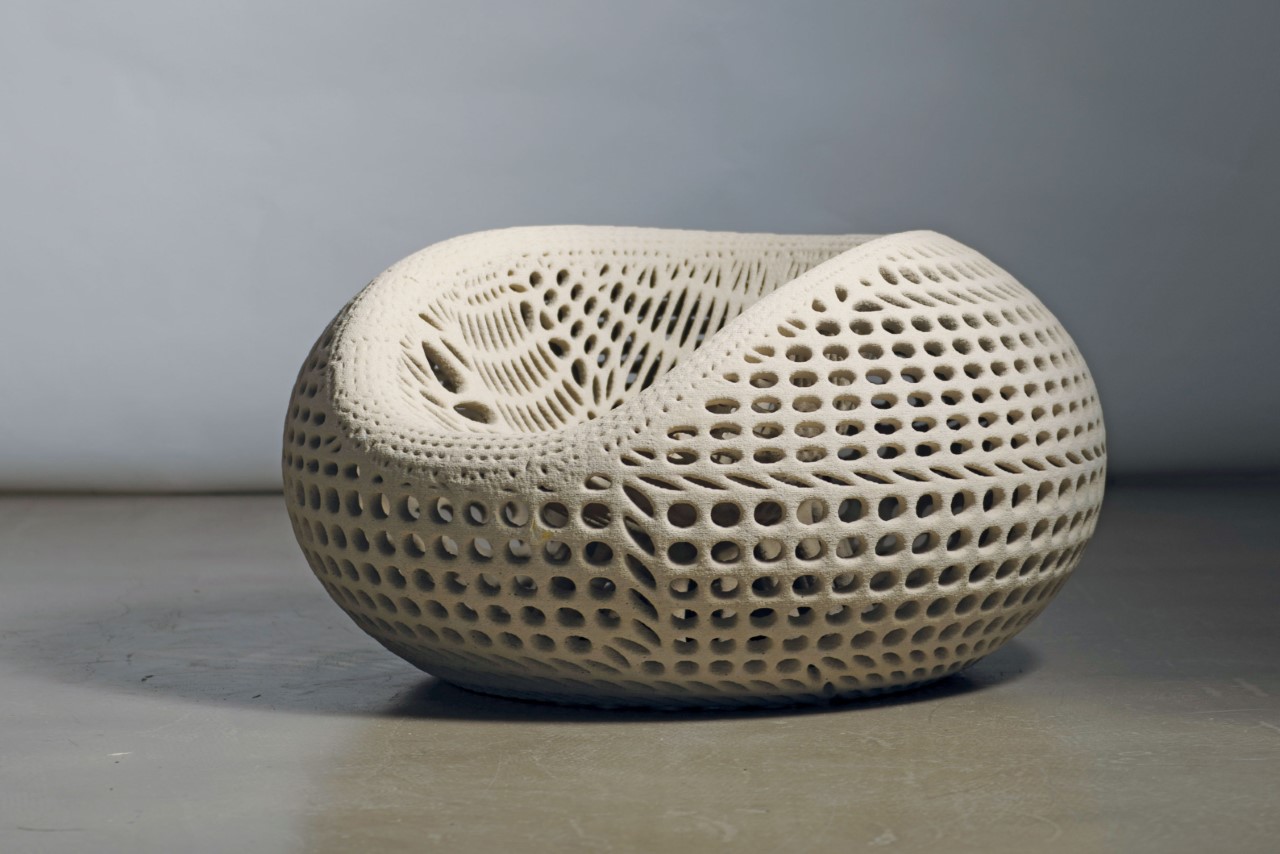
If the CHAIR N°ONE looks like a 3D wireframe come to life, it’s absolutely intentional. Designed by Martin Oberhauser of Studio Oberhauser, the CHAIR N°ONE is the first series of design chairs 3D printed in concrete by selective cement activation. The process involves selectively binding pieces of cement similar to the kind seen in resin 3D printing. The result is a spectacular chair that’s entirely hollow yet structurally sound. Made sustainably using recycled glass as a base material along with concrete, the CHAIR N°ONE has an appeal so unique, it transforms concrete from being a utilitarian material to one with immense sculptural and aesthetic potential.
Designer: Studio Oberhauser
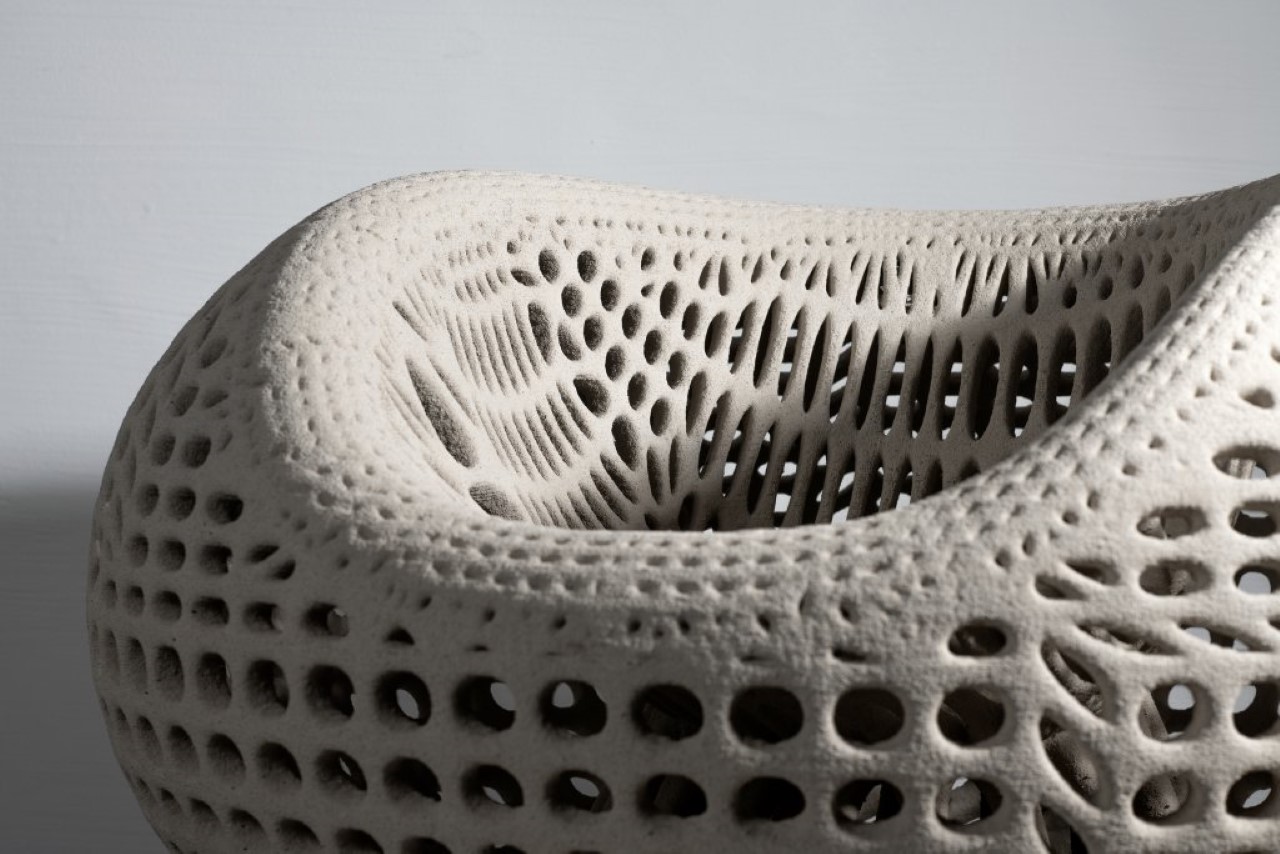
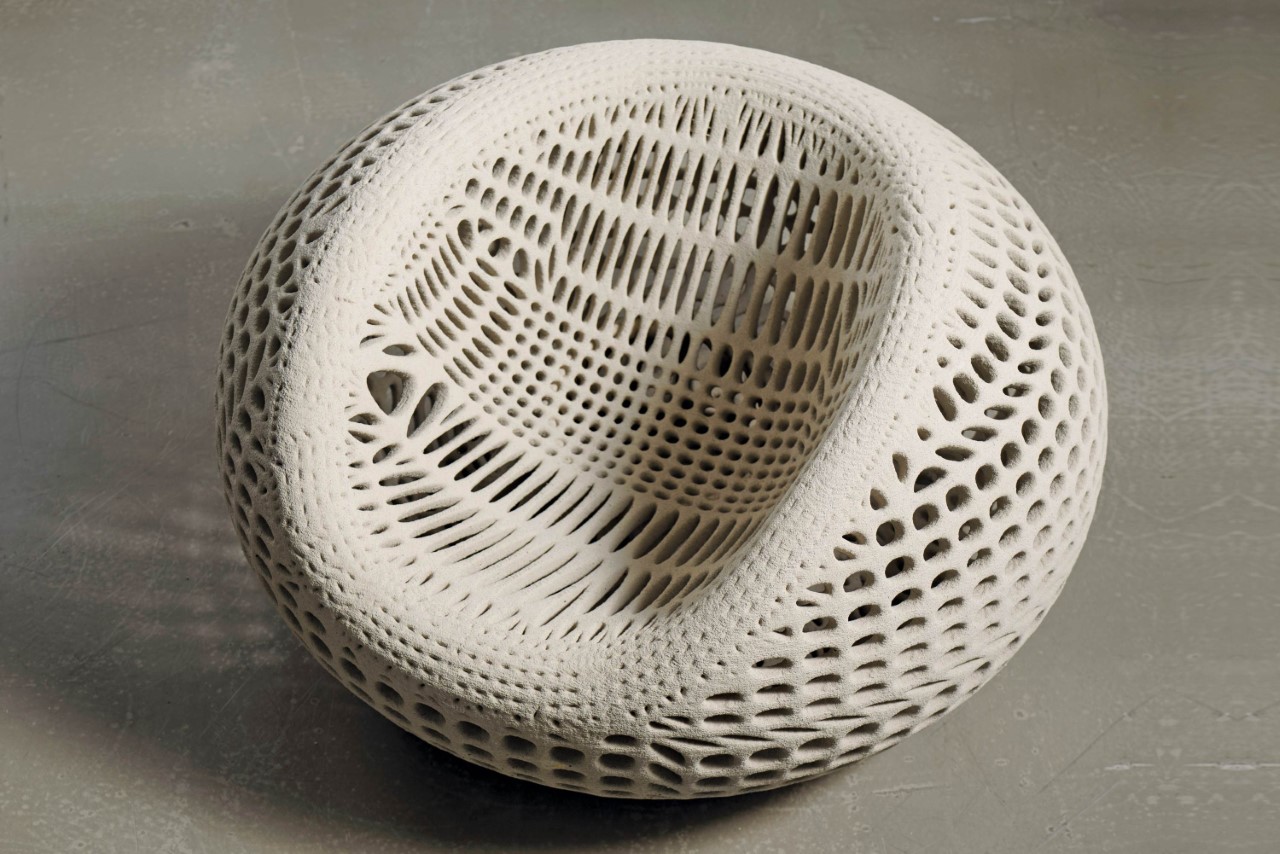
The hollow, almost organic design of the CHAIR N°ONE can be attributed to its use of parametric design to achieve a form that’s equal parts durable and lightweight. Inspired by “intricate bionic structures”, the chair has an almost coral-like beauty to it, featuring a perforated exterior and a hollow interior. The chair’s form, however, remains blob-like and contours wonderfully to the human body. You’ve got a comfortable backrest as well as two armrests, almost like a hard, rigid beanbag.
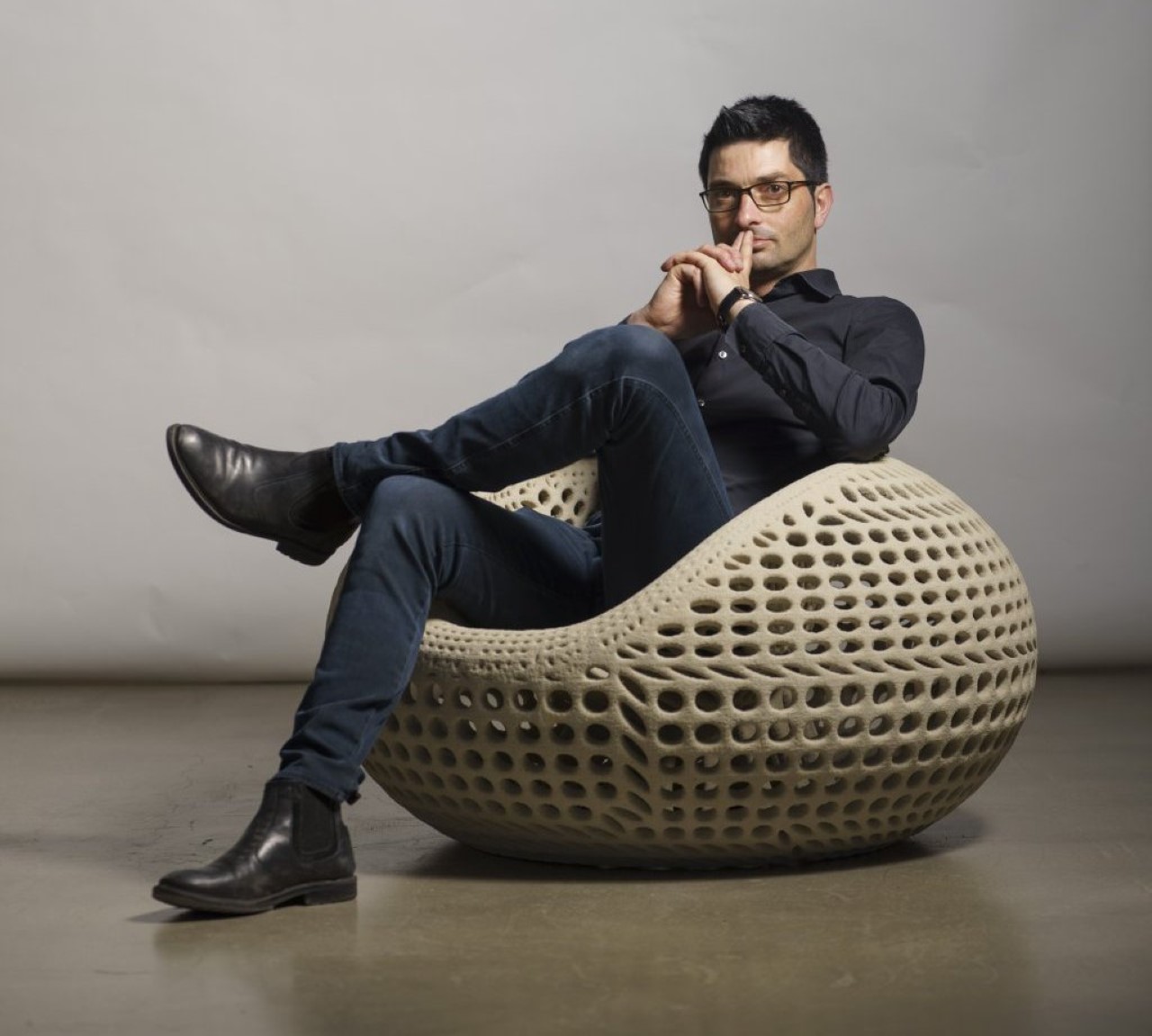
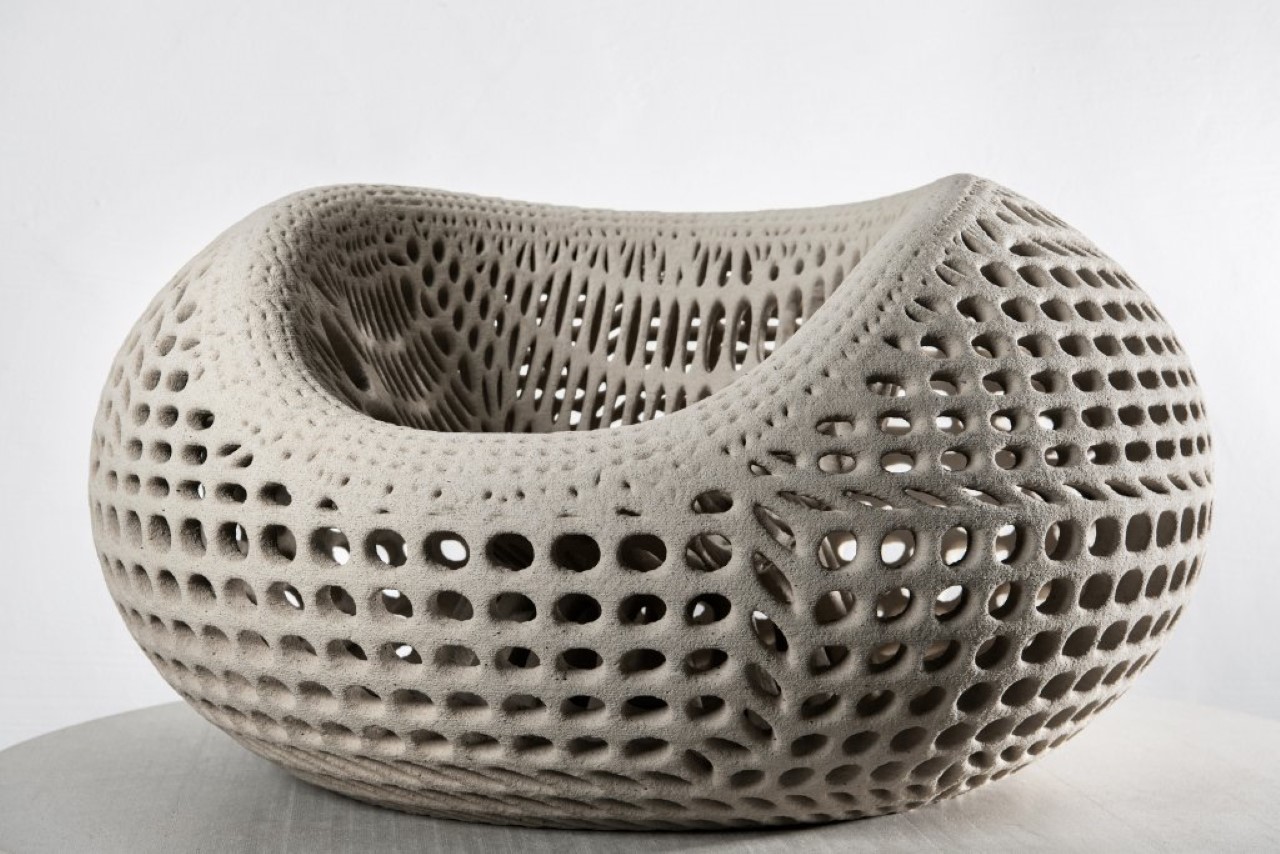
The way selective cement activation works is very similar to other forms of 3D printing. Fine layers of a dry cement-sand mixture are solidified locally by applying water. This way, layer by layer, complex 3D objects can be created with a high degree of geometric freedom. The CHAIR N°ONE also uses crushed, recycled glass as a base material, providing an element of sustainability to the chair’s overall design. “The cement printing compounds can be chosen based on indoor or outdoor use of the CHAIR N°ONE, making the chair a universally usable piece of artistic design furniture”, says Martin Oberhauser.
The CHAIR N°ONE is a winner of the Red Dot Best Of Best Award for the year 2022.
